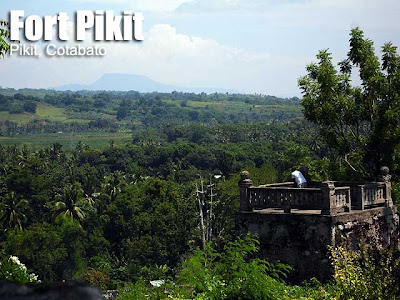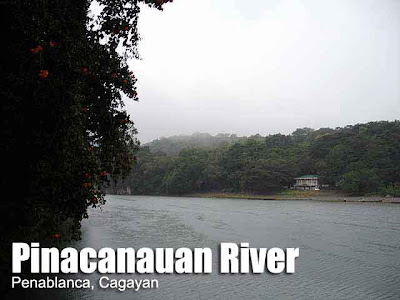 From Sultan Kudarat, we entered South Cotabato. Our main stop for the day was Lake Sebu. The municipality has three lakes including the main Lake Sebu. On the way, we got to see Lake Lahit.
From Sultan Kudarat, we entered South Cotabato. Our main stop for the day was Lake Sebu. The municipality has three lakes including the main Lake Sebu. On the way, we got to see Lake Lahit. Before proceeding to the restaurant, we checked out the viewpoint of Lake Sebu beside the municipal hall. It was a disappointment since the view was not spectacular since it was blocked by trees. What a waste of PTA money! Guess whose name is painted on the structure? This shameless self-promotion in government is really sick. And next time they select and construct a viewpoint, they should make sure there is a view. Anyway, I didn't let that ruin my afternoon in such a great place.
Before proceeding to the restaurant, we checked out the viewpoint of Lake Sebu beside the municipal hall. It was a disappointment since the view was not spectacular since it was blocked by trees. What a waste of PTA money! Guess whose name is painted on the structure? This shameless self-promotion in government is really sick. And next time they select and construct a viewpoint, they should make sure there is a view. Anyway, I didn't let that ruin my afternoon in such a great place. We passed by a small house converted into a T'boli Museum. Not so many items inside but we got some souvenirs there. We then had a really late lunch in a floating restaurant of the Punta Isla Lake Resort where tilapia was the main course on the menu. There were over a dozen tilapia dishes in fact. The view was serene. Nothing beats eating amidst nature at its finest.
We passed by a small house converted into a T'boli Museum. Not so many items inside but we got some souvenirs there. We then had a really late lunch in a floating restaurant of the Punta Isla Lake Resort where tilapia was the main course on the menu. There were over a dozen tilapia dishes in fact. The view was serene. Nothing beats eating amidst nature at its finest. After lunch, we took a pump boat around the lake. We spent PHP350 for the 45-minute boat ride. The area is the ancestral domain of the T'boli minority and we got to see their dwellings and way of life from the boat. There are also several islands in the lake where the T'boli have built their homes.
After lunch, we took a pump boat around the lake. We spent PHP350 for the 45-minute boat ride. The area is the ancestral domain of the T'boli minority and we got to see their dwellings and way of life from the boat. There are also several islands in the lake where the T'boli have built their homes. Sadly, more modern structures are crowding the banks of the lake. It uncontrolled, the lake may lose its charm. In fact, there was a gargantuan church built on top of a hill. I feel that it should at least been blended with its surroundings since it sticks out like a sore thumb.
Sadly, more modern structures are crowding the banks of the lake. It uncontrolled, the lake may lose its charm. In fact, there was a gargantuan church built on top of a hill. I feel that it should at least been blended with its surroundings since it sticks out like a sore thumb.From Lake Sebu, we went to Koronadal to meet up with our brod Gibby and his wife Shay who live in the the Dole Plantation in Kalsangi, Polomolok where we were going to stay for the next two nights. On the way, we bought more fruits in Tupi.
 I took some night shots of Gen San from what they call the highest point in Kalsangi.
I took some night shots of Gen San from what they call the highest point in Kalsangi.











